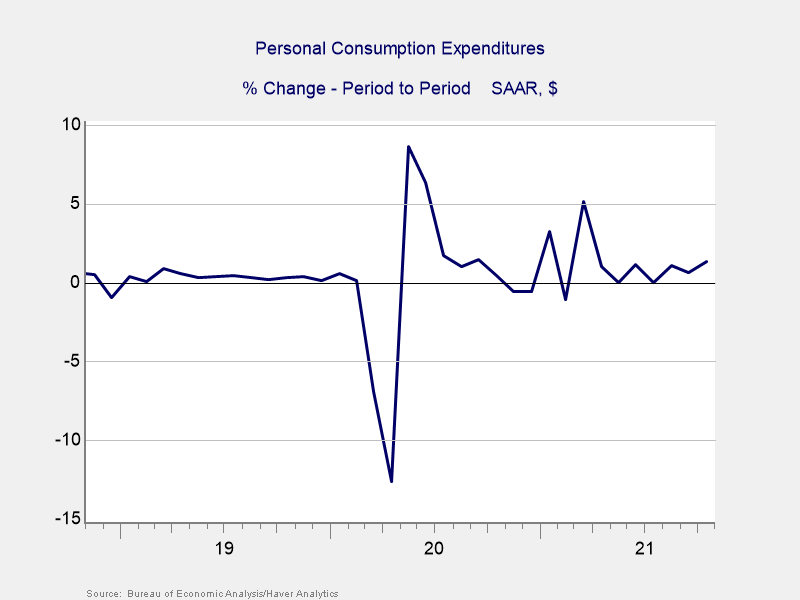Mixed Month for Markets
Equity market returns were mixed in November due to the appearance of the COVID-19 Omicron variant. The S&P 500 declined 0.69 percent and the Dow Jones Industrial Average (DJIA) declined 3.50 percent. The Nasdaq Composite managed to eke out a 0.33 percent return.
These results came despite improving fundamentals. According to Bloomberg Intelligence, as of November 24, 2021, the average earnings growth rate for the S&P 500 in the third quarter was 40.9 percent. This is up from the 37.5 percent reported at the end of October and well above analyst estimates for a 28.4 percent growth rate at the start of earnings season.
Technical factors were also supportive, with the three major U.S. equity markets finishing above their respective 200-day moving averages (although the DJIA approached its trendline). All three indices have remained above this important technical factor throughout the year, indicating continued investor confidence in the economic recovery.
Late-month declines led to negative returns for foreign markets. The MSCI EAFE Index dropped 4.65 percent, and the MSCI Emerging Market Index dropped 4.07 percent. Both indices finished below their 200-day moving averages for the month.
Fixed income markets had a mixed month. Rising investor concerns led to a decline in yields for higher-quality bonds but caused high-yield spreads to widen. The 10-year U.S. Treasury yield fell from 1.58 percent at the start of the month to 1.43 percent at month-end. The Bloomberg U.S. Aggregate Bond Index gained 0.30 percent, and the Bloomberg U.S. Corporate High Yield Index declined 0.97 percent.
Medical Risks Rise with Omicron
Public health focus was on the COVID-19 Omicron variant, which increased investor concern and contributed to the late-month sell-off. While average case growth rose from October to November, the number of daily new cases remains below the recent Delta variant peak.
We ended the month with more than 58 percent of the population fully vaccinated and an additional 11 percent having received at least one shot, and it’s likely that we will see a continued uptick in vaccinations. Caution is warranted, but Omicron’s current impact remains muted compared to the Delta variant.
Economic Recovery Continues
The October job report saw 531,000 jobs added, the best month for job growth since July. August and September job growth were both revised upward as well. Although the November report came in below expectations, it will likely be revised upward based on the stronger household survey data. In any event, the monthly average job growth remains above 500,000 for 2021. Such strong hiring during the Delta wave suggests recovery will be resilient to Omicron.
Another factor supporting growth and recovery is consumer spending, which continued to surprise. As you can see in Figure 1, November marked eight consecutive months with personal spending growth and was the best month since March.
Figure 1. Personal Consumption Expenditures

Business spending was supported by record-high levels of business confidence. Core durable goods orders increased 0.5 percent in October for the eighth straight month. This continued improvement was an encouraging sign that businesses remain willing and able to invest to meet high consumer demand levels.
The housing sector also showed continued signs of improvement, including a higher-than-expected increase in existing home sales in October that brought the pace of sales to a nine-month high.
Medical and Policy Risks Remain
Although economic recovery continued, risks are very much still in play. Medical risks are still contained but bear watching while policy risks are only starting to become apparent and will likely rise by year-end.
The most immediate policy risk is politics, including the debt ceiling confrontation. While a stopgap measure that will keep the government operating through February has been signed, the issues have not gone away – and it will continue to be disruptive. Combined with the uncertainty surrounding the Build Back Better Act, this could negatively impact markets and the pace of economic recovery.
The Federal Reserve (Fed)’s decision to start tightening policy is becoming a headwind after Chair Jerome Powell rocked markets when he indicated the tightening may be faster than expected.
International risks included the recent slowdown in Chinese growth and concerns about the country’s troubled property development sector. These factors are not expected to lead to a global financial crisis, but they should be watched.
November’s rising risks and market turbulence are a reminder that the road back to normal will be long, and we may experience setbacks. A well-diversified portfolio that matches investor goals and timelines remains the best path forward for most. If you have any questions or concerns, please reach out to us.
All information according to Bloomberg, unless stated otherwise.
Disclosure: Certain sections of this commentary contain forward-looking statements based on our reasonable expectations, estimates, projections, and assumptions. Forward-looking statements are not guarantees of future performance and involve certain risks and uncertainties, which are difficult to predict. Past performance is not indicative of future results. Diversification does not assure a profit or protect against loss in declining markets. All indices are unmanaged and investors cannot invest directly into an index. The Dow Jones Industrial Average is a price-weighted average of 30 actively traded blue-chip stocks. The S&P 500 Index is a broad-based measurement of changes in stock market conditions based on the average performance of 500 widely held common stocks. The Nasdaq Composite Index measures the performance of all issues listed in the Nasdaq Stock Market, except for rights, warrants, units, and convertible debentures. The MSCI EAFE Index is a float-adjusted market capitalization index designed to measure developed market equity performance, excluding the U.S. and Canada. The MSCI Emerging Markets Index is a market capitalization-weighted index composed of companies representative of the market structure of 26 emerging market countries in Europe, Latin America, and the Pacific Basin. It excludes closed markets and those shares in otherwise free markets that are not purchasable by foreigners. The Bloomberg Aggregate Bond Index is an unmanaged market value-weighted index representing securities that are SEC-registered, taxable, and dollar-denominated. It covers the U.S. investment-grade fixed-rate bond market, with index components for a combination of the Bloomberg government and corporate securities, mortgage-backed pass-through securities, and asset-backed securities. The Bloomberg U.S. Corporate High Yield Index covers the USD-denominated, non-investment-grade, fixed-rate, taxable corporate bond market. Securities are classified as high-yield if the middle rating of Moody’s, Fitch, and S&P is Ba1/BB+/BB+ or below. Authored by Brad McMillan, CFA®, CAIA, MAI, managing principal, chief investment officer, and Sam Millette, manager, fixed income, at Commonwealth Financial Network®. © 2021 Commonwealth Financial Network®





